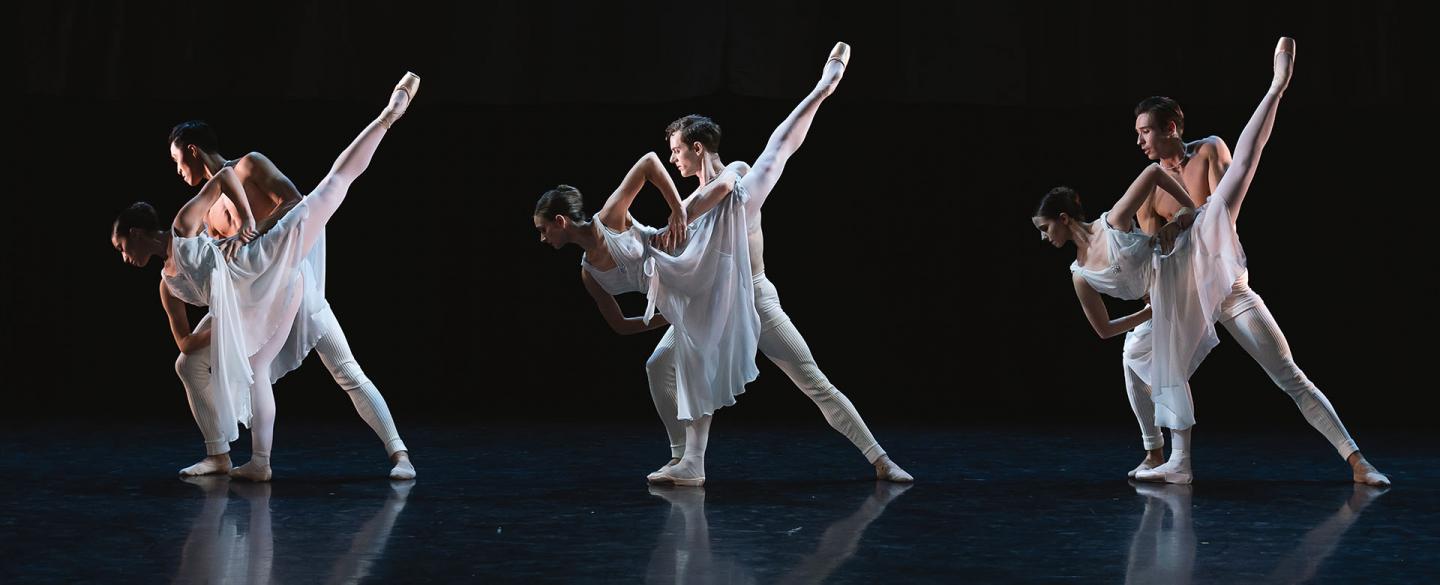

Adagio Hammerklavier (1973) marks the period in which Hans van Manen started to use classical pointework more often, and in this ‘timeless classic of twentieth-century dance’ he did so in a way that was exceptionally lyrical for him.
As usual, Van Manen took his inspiration from the music; in this case, Christoph Eschenbach’s unusually slow performance of the adagio from Beethoven’s Piano Sonata no. 29 in B-flat major. The master choreographer was inspired to carry out a deep investigation into just how slow a movement can be. He once described the result as, “a wheel that is still just moving after a push, just before it falls.”
Production photos featuring dancers Joseph Taylor, Dominique Larose, Alessandra Bramante, George Liang, Amber Lewis, and Jonathan Hanks. All taken by Emily Nuttall.
Rehearsals of Adagio Hammerklavier by Hans Van Manen featuring dancers Joseph Taylor, Dominique Larose, George Liang, and Alessandra Bramante with Larissa Lezhnina. Photos by Emily Nuttall and Sophie Beth Jones.
In the opening section and the subsequent short pieces for the six soloists, it is evident how much the dancers have to move as one and almost breathe together. Each group section is followed by a duet for one of the couples. The first is tender, although the woman does regularly try to escape the man. Here, the movement idiom is downwards and grounded, whereas the second dynamic duet seems about to take flight, with snappy extensions and high lifts. The tangible unrest of these two duets makes way in the third pas de deux for harmony and submission. In breathtaking slow motion, the deceleration reaches its absolute peak here.
Music by Ludwig van Beethoven
Piano Sonata No. 29, Op. 106 III. Adagio sostenuto
Performed live by:
Colin Scott - Piano
Set design by
Jean Paul Vroom
Lighting design by
Jan Hofstra
Lighting revival by
Bert Dalhuysen
Restaged by
Larisa Lezhnina & Rachel Beaujean
Costume design by
Jean Paul Vroom
Costumes provided by
English National Ballet
Running time 25 minutes